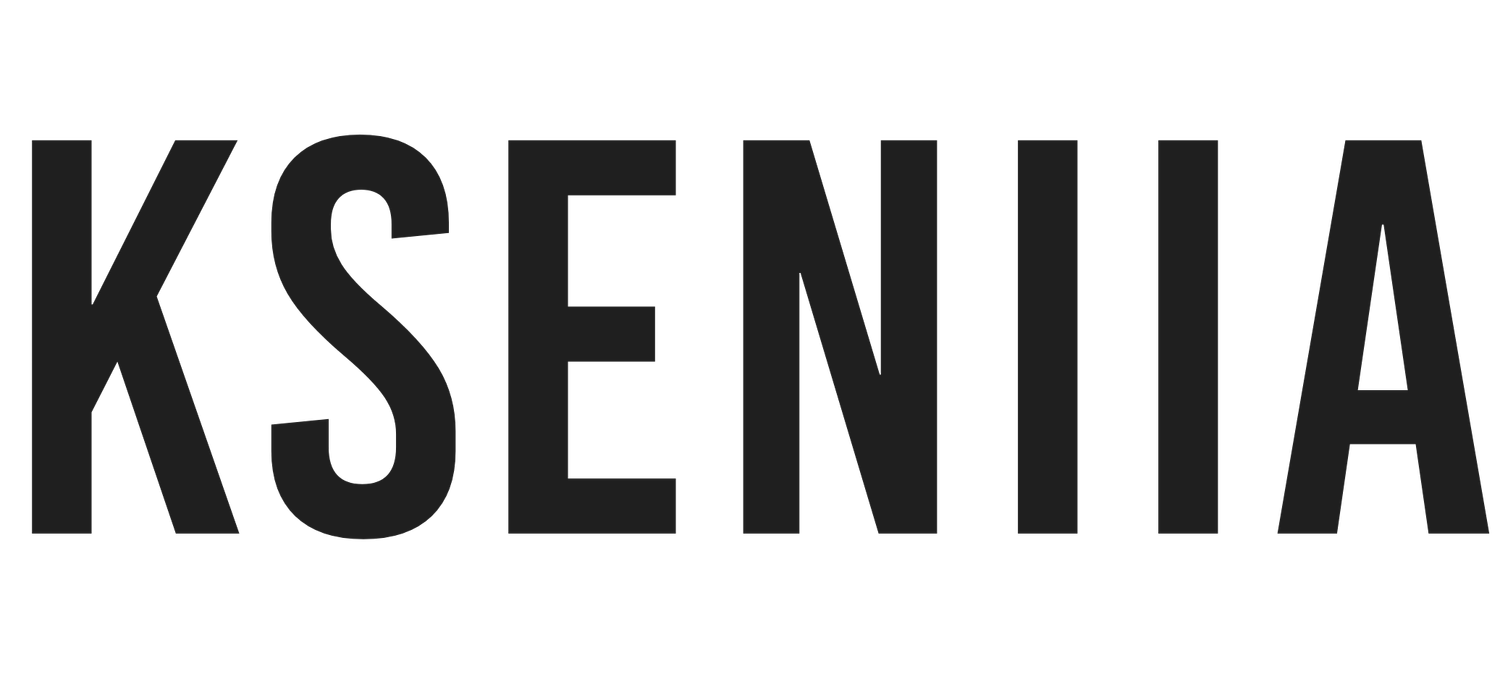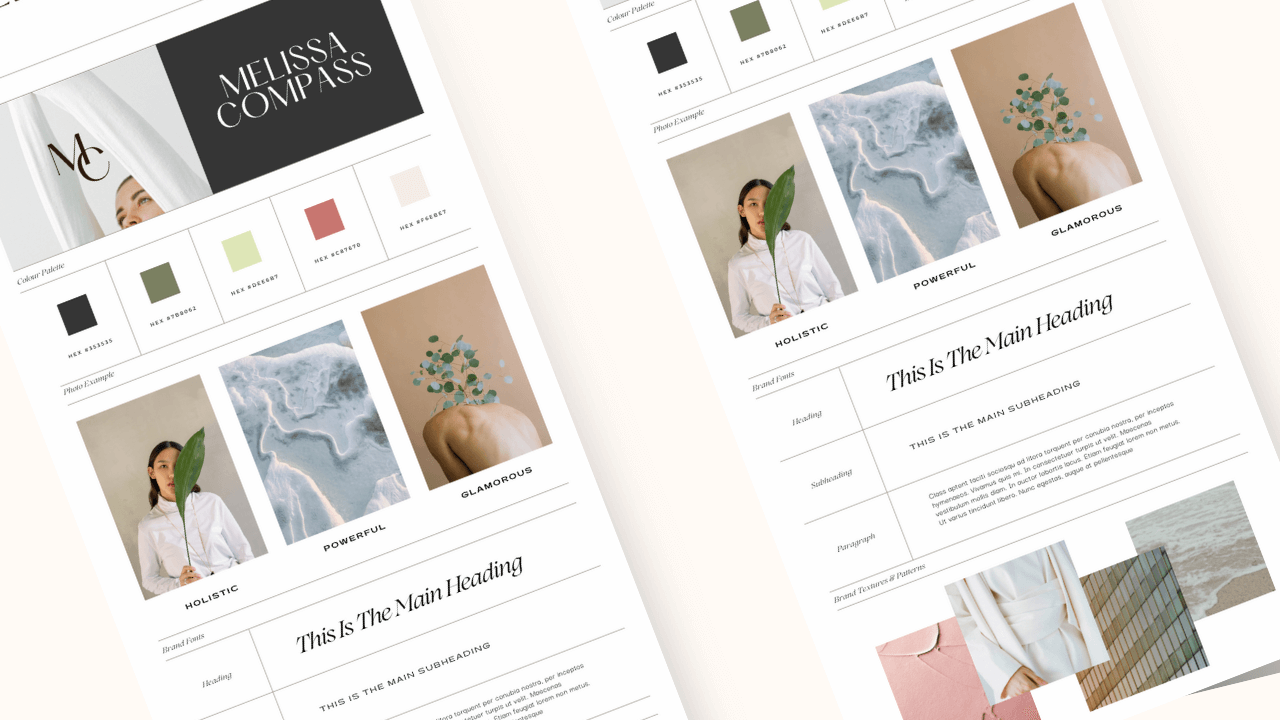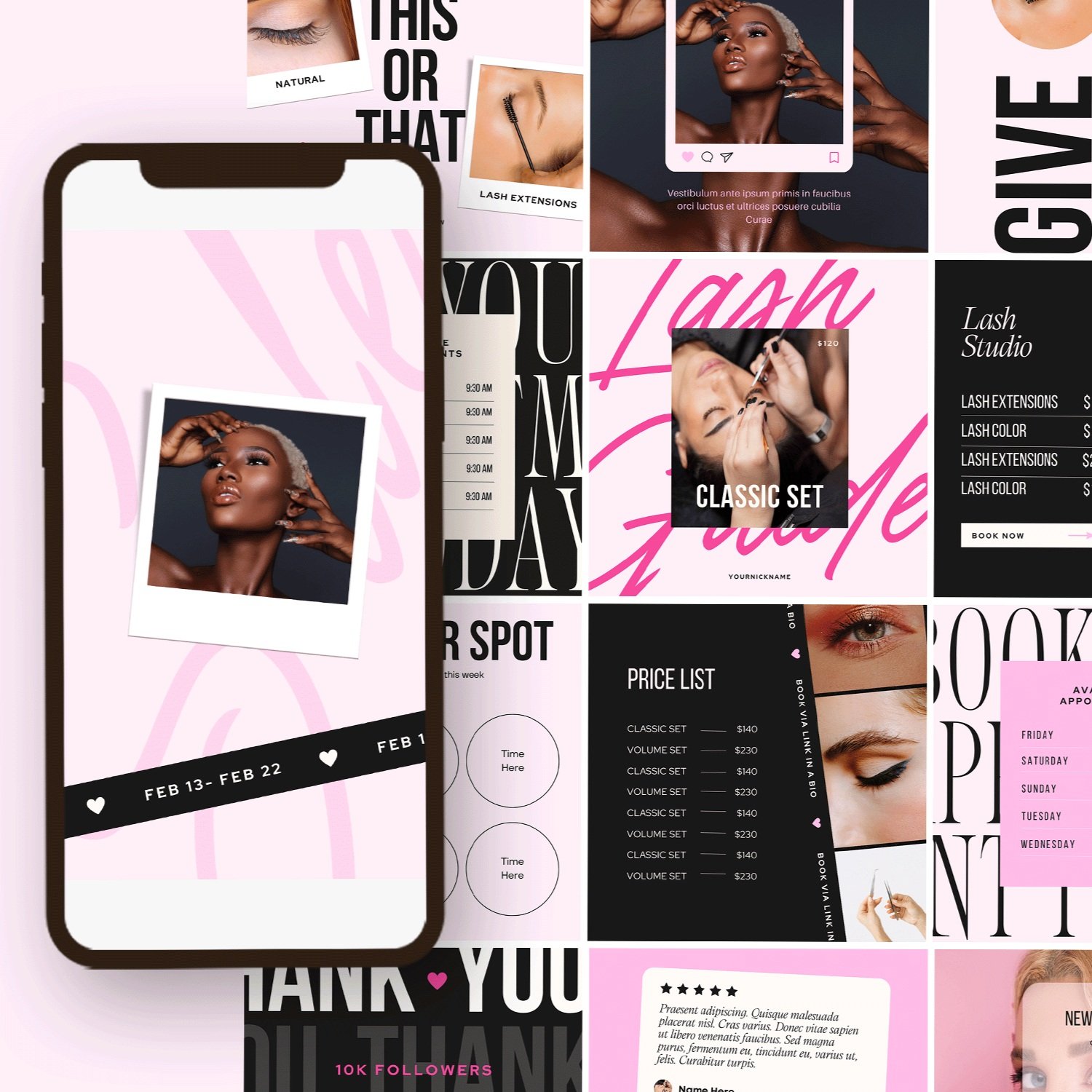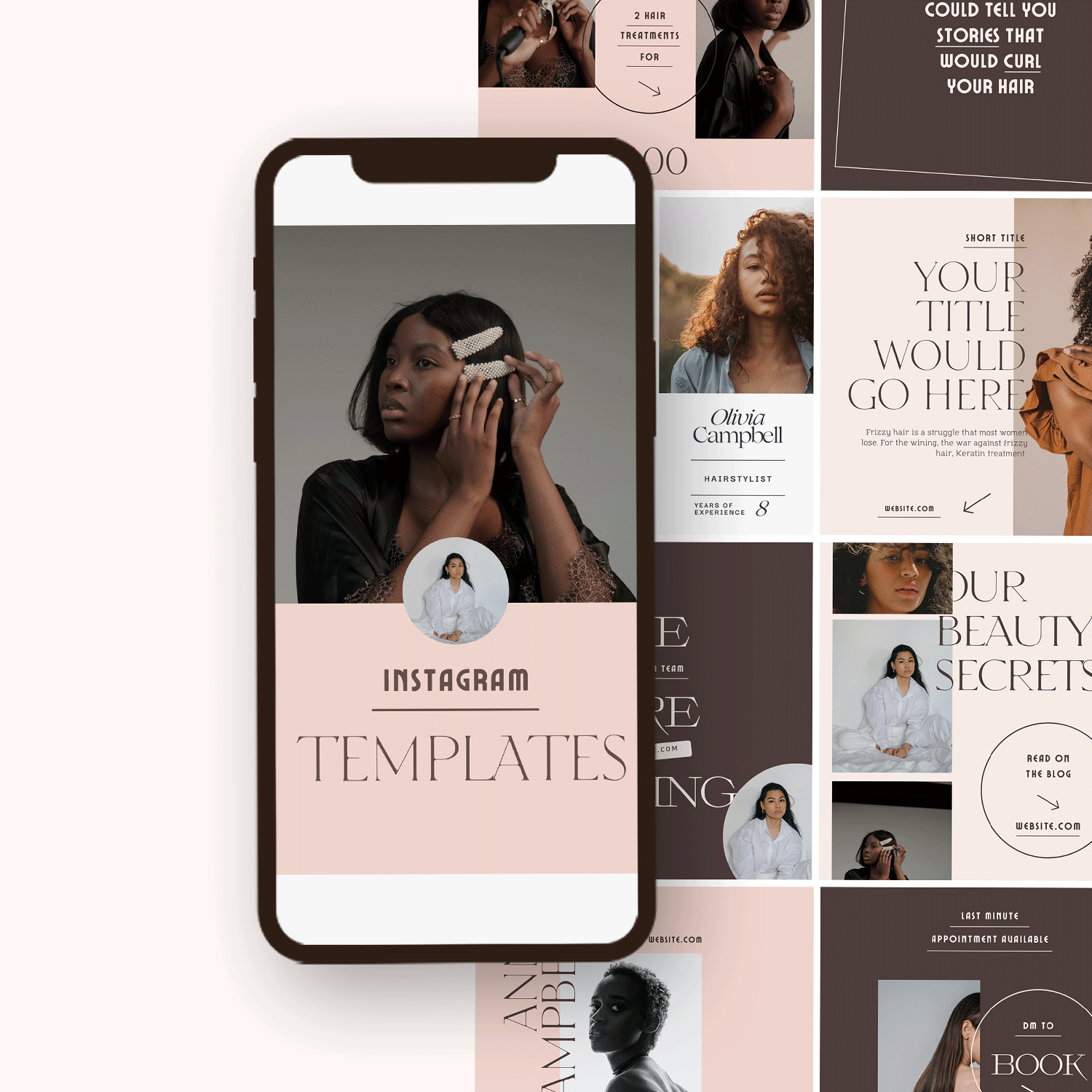How To Create A Brand Board (Free Canva Template + Examples)
Branding is one of the most significant business traits, but it is also very complex to define. Branding can be said to be the identity of a company, simply put, your business personality. Branding is not about a sole color or logo; it is the distinctive combination of several factors such as style, logo, attitude, etc. It is about how you see it and, most notably, how your customers perceive your business. Your brand needs to target the ideal clients and zoom in on clients that will profit most from your products and services. Your posts need to communicate to those exact people; they are the ones who will take action when they have confidence in what you do or stand for. Three things to keep in mind when it comes to branding; target the ideal audience, stand out from your competitors and convey your story consistently
Branding might be a bit challenging to pin down, but a brand board is a good starting point.
related article: 40 Free Canva Cursive Script Fonts. For Designing Winning ProjectsWhat Is A Brand Board?
A brand board is a quick visual reference for your business. It is a pictorial summary of the look and feel of your brand and what makes your brand stand out. A brand board is also a road map that comes with guidelines on implementing each brand element. You can share a brand board with web designers, printers, or anyone working on the business branding.
Brand boards are typically designed by a graphic designer who helps with the web design and the logo. An effective brand board will outline the visual arrangements necessary to attract the ideal customers. The brand board can also be called a mini style guide and can be used across various industries.
Qualities That Makes an Ideal Brand Board
An ideal brand board captures your business's unique style and graphic identity in a comprehensive manner. Without an explanation, anybody looking at your brand board should be able to see, know, and even feel your brand's values, style, and personality.
In addition, clients who come across your brand outside of social media or your website should be able to identify that it is from your business almost immediately. The recognition is achieved only by consistency and uniformity.
Your brand should have a uniform font, logo, colors, and patterns. When a staff is absent, a new team should create slides for presentation if you provide them with the same brand board that details the guidelines for colors and font style. A new staff member should work with your brand board, and their work will look consistent with previous work.
Free brand board template canva
Get my custom brand board templates! It is fully editable on Canva, all you have to do is click the link, follow the instructions, and have your brand board ready in a few minutes.
Why Does Your Business Need A Brand Board?
An ideal brand board captures your business's unique style and graphic identity in a comprehensive manner. Without an explanation, anybody looking at your brand board should be able to see, know, and even feel your brand's values, style, and personality.
In addition, clients who come across your brand outside of social media or your website should be able to identify that it is from your business almost immediately. The recognition is achieved only by consistency and uniformity.
Your brand should have a uniform font, logo, colors, and patterns. When a staff is absent, a new team should create slides for presentation if you provide them with the same brand board that details the guidelines for colors and font style. A new staff member should work with your brand board, and their work will look consistent with previous work.
If you are planning to create your brand board, then this video would be helpful to you.
Brand Board Examples
See below examples of Brand boards from my past clients. As you can tell, I alter brand elements depending on the brand.
Why Does Your Business Need A Brand Board?
A well-structured business provides its services to specific groups of people. These people are your niche. A brand board helps you create visuals that attract your niche (or ideal customers) and make your business stand out simultaneously.
You can also view your brand board as a solution. It helps you connect with clients on an intimate level and allows you to strategically position your business as a solution to their needs and a position as a guide to help them attain their goals.
Since a brand board is a map, you can make use of it as a reference guide. It can serve as an assessment when generating graphics to represent your business. If you are working on a project and want to decide on the style of website, email newsletter, and social media account, all you need is to put up against your brand board and see if it matches and decide whether to go with it or not make some adjustment. Also, if you worked with a client that needs a referral for a service you don't offer, your brand board can help the person they are working with achieve consistency, and they can do this without altering what you have already started.
For example, if your brand board comprises elements like light images and playful patterns, and neutral colors. It makes it easier to dismiss dark and moody social media graphics. Also, if your brand board contains abstract photos and colors, you might have to reject a website template that uses muted colors or old images. Brand board reveals to your customer every element of your visual brand in one tidy document. Brand board conveys your attributes, values, and personality at a glance.
A brand board saves you the time, energy, and workforce necessary to sustain a comprehensive and consistent brand. Even though some people think that brand board is time-consuming, not having one will cost you more in the long run.
You should also note that brand boards are different from style guides. Style guides are more like detailed instructions on how much spacing to use and what background matches your logo. The brand board is simply boards that include your brand elements, while the style guide comes with instructions on how and where to place things. The digital version of the brand board can be circulated to the agencies and vendors by email, serving the physical purpose of the physical brand board. The brand board should also be displayed in the office space.
Brand Anchors and Image Inspiration
Brand anchors and image inspiration are not very common with most brands. Include three to four adjectives that best describe your brand personality and have it on your brand board. These adjectives can be called rand anchors. Brand anchors help when you are making design decisions. It also helps when you are making decisions on patterns and images
You can also include a few images for inspiration. Images that are in alignment with your brand strategy and anchor should be included in your brand board. Image can help you stay grounded because it becomes the basis of avoiding and having when creating your image.
Elements to Include In a Brand Board
Every brand board should include a logo, colors, font, brand style.
1. Logo
A logo is necessary now in the age of social media. There are many platforms where your business logo can be shared. Typically, a business logo should have a vertical (square) and horizontal (rectangle) format. If your company's logo is flat, it might not fit into the squares of social media pages. Designing a logo is one of the first steps in creating a brand board. Logo helps solidify the visual characteristics of the brand, such as color, font's textures, and patterns.
An icon can also be created from your logo, and it is referred to as a sub mark. A sub mark can be a small image, monogram, or initials. Sub marks are used in favicons, Instagram story covers, watermarks, or patterns.
2. Brand Colors
Brand colors should be included in your brand board so that every staff in your company can use the same colors on all your pictorial brand elements. Most businesses usually have two to three primary colors and three to five secondary colors. In the brand board, a designer will include a code to ensure the exact shade of your brand's color will constantly be used in your logo, business cards, and website. Brand colors are gotten from the key term that is used to describe a brand. Brand colors must complement the brand. Brand color ought to fit the nature and objective of the brand and the variety and forms of the product offered o the target market. For instance, the brand color of a travel agency will be different from that of a fashion brand
3. Fonts and Patterns
Don’t forget about fonts. Fonts should be included in your brand board to achieve consistency. Most brands work with two to three fonts and nothing more than that. The primary font will be used for flyers, posters, and stationery. At the same time, the other fonts will work with the primary font and will be used in parts that need extra inflections. Some brands even have unique fonts for websites only. Some fonts are reflective to serve as your primary font, while handwritten fonts can be your secondary font. Finding the perfect font takes time. It is recommended that you include the name of the chosen fonts to make it easier for others. Fonts should be determined by the proportions of innovative artwork such as brochures, social media posts, television commercials, etc.
Every brand will also have a definite pattern that suitably balances its nature, target audience, and kind of product offered. The fashion brand will have stylish and daring patterns, while a jewelry brand will have the patterns and textures that will fit its sophisticated carvings and designs.
4. Brand Style
The brand style is included in a brand board to remind people of the kind of style your brand represents. Include a snapshot of your brand style in your brand board. Brand style helps you stay consistent, especially in marketing materials. Using the same images on blogs, mail templates, and social media can also help increase brand awareness.
Brand Board Sizes
Typical Brand board dimensions are
For Pinterest, the dimensions are about 750 X 750 pixels for vertical and 950 X 700 pixels for horizontal.
For Canva, they are usually 2550 x 3300 pixels
For Adobe Illustrator 1200 x 3120 pixels for vertical and 2048 x 2048 pixels for horizontal.
related article: 50 Stunning Squarespace Website ExamplesLooking for a unique website design for your business? Explore our Squarespace Web Design packages for a stunning website. Need to enhance your site's visibility? Our Squarespace SEO services are here to assist you. Curious about our work? Take a look at our Squarespace website designer portfolio for some inspiration!
Tools To Create Your Brand Board
You can create a brand board by making use of different tools.
1. Canva
Here is my free, downloadable brand board template. It saves time and makes your job easier.
Canva is the application that makes creating a brand board on your own an easy step. It is the perfect app for small businesses or anyone working without a team. Canva also helps to create your brand identity without any hassle. The only setback with Canva is that you might need the Canva pro to gain access to some of their branding tools. Canva allows you to upload your brand logo, set your fonts and colors. Canva allows you to create a brand board, but you need Canva pro to upload custom fonts or your branding tools. If you are big on brand consistency and designing graphics for yourself, then definitely consider Canva also if you have not perfected your designing skills or want to create a lead magnet or any digital product. You can design your brand logo on Canva as well.
2. Creative Market
Creative Market is a global marketplace for customized digital design content created by freelance creatives. Their mission is to make beautiful designs easily understood and accessible to everyone! The app allows you to add colors and textures, illustrators, patterns, and icons. They come in different packages, and prices are different.
You may buy a suitable brand board Template from Creative Market and use it for your business.
3. Adobe Illustrator
I am a big fan of Adobe products and have been using them since they have been introduced into the digital world. Adobe Illustrator is great vector-based software you can also use to create your business brand board. It may not be very intuitive and needs a little learning curve, however, once you familiarize yourself with the basic tools it makes designing quite simple.
Adobe Illustrator also allows you to drag all your tools on the art-board and drag it off. It makes decision-making easy because you can have all your elements on a board and have a general overview.
5. Fontjoy
Font designing is also as important as your brand colors. Your font needs to represent your brand. You can be artsier with the headings of your work, while with the body, you can make it simple and easy to read. You can also combine fonts that are easy to read with a fancy font. Fontjoy allows you to determine fonts that complement each other. Fontjoy is your app for font inspiration. With Fontjoy, you can create font combinations and decide on the ones you like and the ones to keep away from your brand board.
6. Canva color wheel
Canva Color Wheel lets you organize color scheme with the color wheel. Before you pick hues, find out which colors naturally go well together. Consider how hues will look next to each other using complementary, contrasting, related, etc. But instead of generating color schemes based on the colors in the image, this web application allows you to pick one color, then it will show you thematically-linked colors that surround
Branding Elements to Keep In Mind When Creating a Brand Board
1. Brand Identity
Brand identity is how you portray yourself to customers. When you think of successful companies or companies that command authority, you will see that they have been consistent in their branding. Their consistent brand has captivated their clients to the extent that clients feel a personal connection to the brand. You have to keep your brand identity in mind when choosing colors, for instance. Colors reflect mood and personality. Your brand identity should not be clashing with your colors. Clients should be able to see your brand identity reflecting in your colors as well. The brand identity reflects in everything that you do; it can be perceived throughout your website, social medial profiles, and flyers, and so on. Brand identity is not only about your colors but your logo, theme, style.
2. Brand Image
Brand image is actually what your customers think of you. Though you have less control over this, if you have done an excellent job with your brand and brand board, your customers should perceive you rightly. Brand image is where consistency with all branding tools comes to the test.
When you carry out a survey, you should be able to tell if you are being perceived rightly by the clients and the general public or not. No matter how consistent you are with your branding journey, some clients will still not perceive you rightly, but it is the number that counts. If the number is low, then you might need to revisit your branding board and make amends. You can also figure out your branding image by listening to your customers more.
3. Brand Personality
Brand personality is the characteristics and qualities that you have assigned to your brand. Do you want your business to be known as creative, funny, and expensive? You also need to have a list of characteristics that you don't want your brand associated with. By asking your clients the right questions, you will determine if your brand has the right personality. Brand personality comes as a brand anchor on your brand board.
4. Brand Name
The brand name is an identifying element, and this is assigned to your business to stand out from other companies. The brand name echoes in customers' minds and what they associate your product with when it is mentioned. When you say specific names like Pepsi, a feeling is invoked. The brand name also helps with marketing sales and strategy. There is a website that can help you with a unique brand name.
5. Tagline
A tagline explains to potential customers what services you offer and whether or not they need your services. This tagline should be able to answer customers whether they should stick with you or keep it moving. A tagline should be in alignment with your brand's personality. Make sure it is started and includes all the information your potential client might need.
6. Brand Strategy
Brand strategy will plot how your business is unique, reliable, and dependable. It will also convey your purpose, capacities ad how you solve problems for individuals. Brand strategy is the outline of how you want the world to view your business. Brand strategy is vital and foundational for starting a successful brand; it is one of the areas that most companies ignore because they jump right into marketing and executing.
Creating your Brand Board
In creating a brand board, you must follow some guidelines to make the process easier. You can design your brand board all by yourself, or you can hire an expert. If your brand board is not complex, you can download templates and fill out the details on the guided template
Start by outlining the overall idea on a piece of paper.
Then write short explanations of the elements to be included.
Download an applicable template for your brand board or make an outline drawing in the design software like Canva or Adobe Illustrator.
Import your main log into the artwork and resize if needed to fit into the main log space
After the main logo, the color palette is next, and the color codes and values are below each color icon. Then the logo variation, sub mark, and watermark come next after the color palette.
Attach the graphic section and brand style next.
Font size and size description come next after the graphic elements and brand style
After you have confirmed that you have placed all the articles you were working on, it is time to export your brand board in a readily available format like an image file or PDF
The specialized software saves the files in formats that can only be accessed via the application. Render and export your project into image or PDF file and make prints outs and backup for your project as a typical routine
Before creating a brand board, it is vital to find inspiration from another successful brand. It would help if you took the time to study these brands and find out what they have on lockdown and what they are doing wrong. You should check the competitor imagery and the quality of their work. Check out their social media page to see what got the highest likes, comments, and reposts. After doing these then you can strategize on making your brand better. Researching competitors is not the same as copying the competitor's idea. It would be best to understand who your customers are and tailor your brand identity and strategy towards them. Learning from a successful brand comes in handy after you have identified your target audience. It also comes in handy if you are a new business and want to learn from these successful companies but not flat out plagiarism. Amazingly, customers can identify rip-offs.
Need Help with Your Brand?
Do you need help with your website and brand? I am Squarespace Web Designer and Band Logo Designer serving clients from all over the world who can turn your business into a memorable brand.
I like to solve my clients problems with quality work that helps them generate more business.















![Best Squarespace Blog Templates [2025]](https://images.squarespace-cdn.com/content/v1/612d59e1be002022b69bab38/1712101913652-LLH5BC6X72O3YUM1XZWX/shop+Best+Squarespace+website+Templates-0.jpg)
![Best Squarespace Templates for Authors [2025]](https://images.squarespace-cdn.com/content/v1/612d59e1be002022b69bab38/1712101992593-XT0EMWH2Y4OJARK2LZVY/shop+Best+Squarespace+website+Templates-9.jpg)



![Best Squarespace Templates for Social Media Managers [2025]](https://images.squarespace-cdn.com/content/v1/612d59e1be002022b69bab38/1712102428989-GC7QZ5MWW7WSTZP000IF/shop+Best+Squarespace+website+Templates-56.jpg)
![Best Squarespace Templates For Spa Beauty Salon [2025]](https://images.squarespace-cdn.com/content/v1/612d59e1be002022b69bab38/1712102634445-RK14NY538O0S38FUSGC3/shop+Best+Squarespace+website+Templates-98.jpg)
![Best Squarespace Templates for Virtual Assistants [2025]](https://images.squarespace-cdn.com/content/v1/612d59e1be002022b69bab38/1683143145227-2XAH93IX2RYV1WD4ZBPX/Squarespace-Templates-Virtual-Assistants-Coach-Website-Design-Squarespace-Theme-personal-Portfolio-Coaching-000.jpg)











